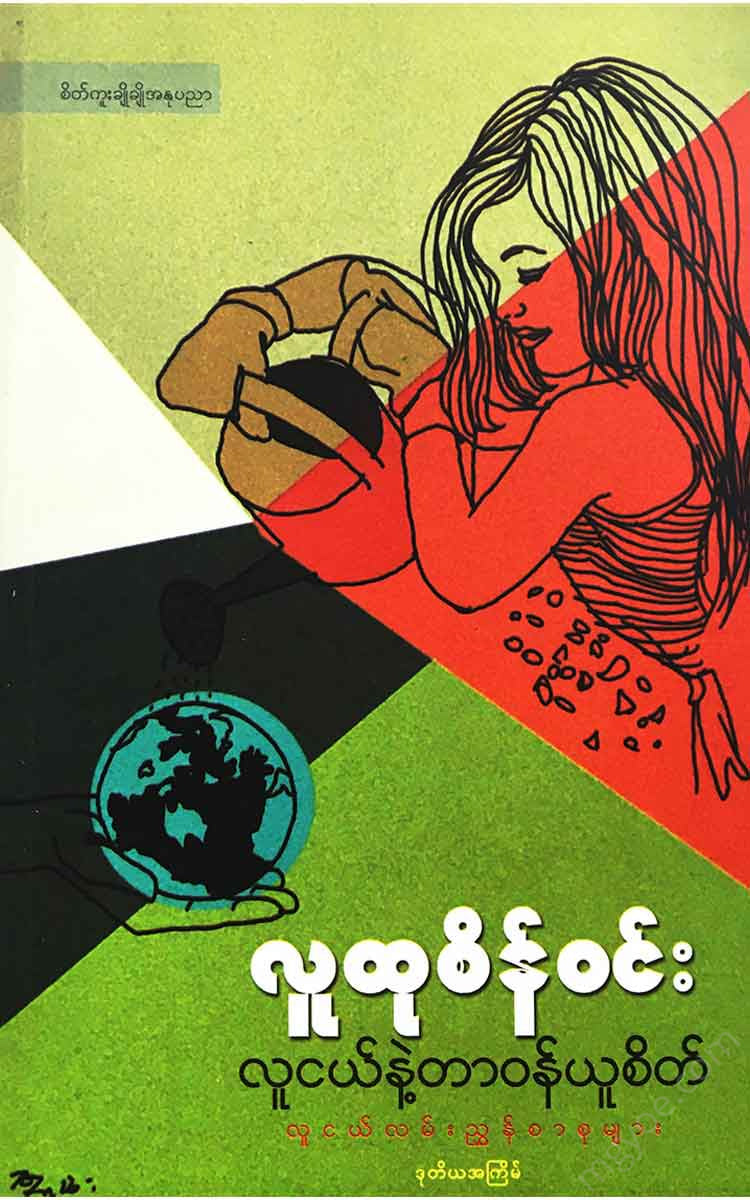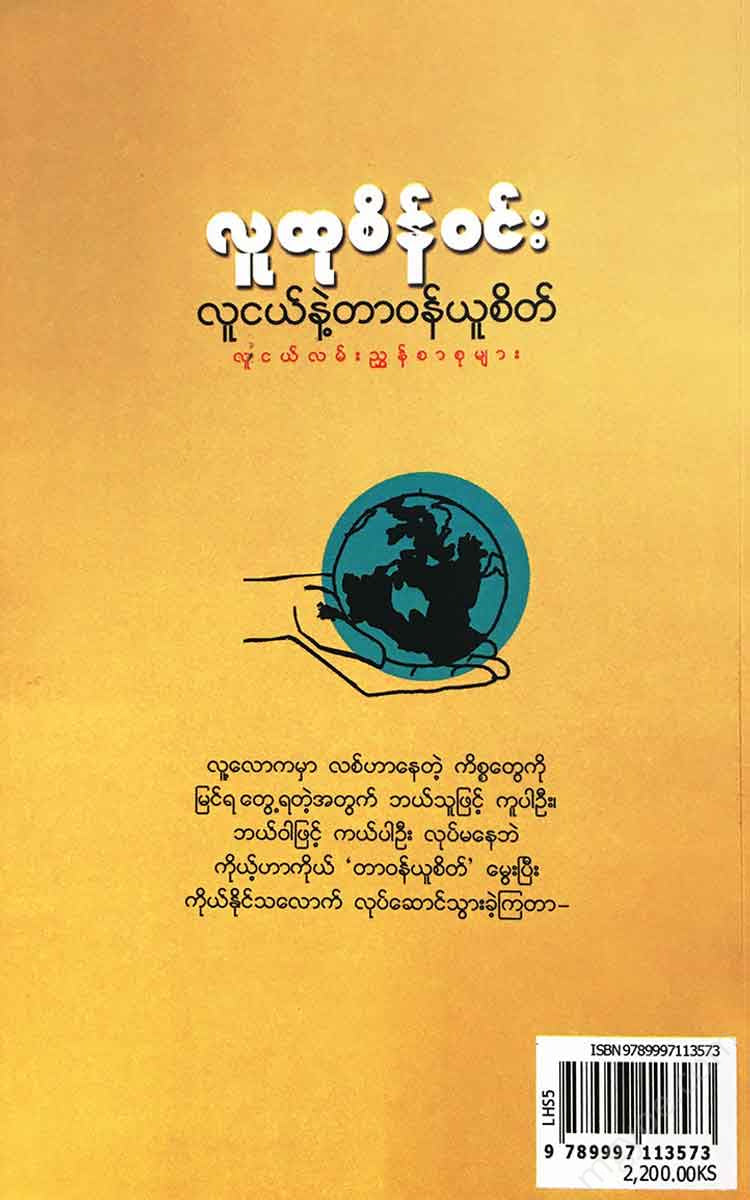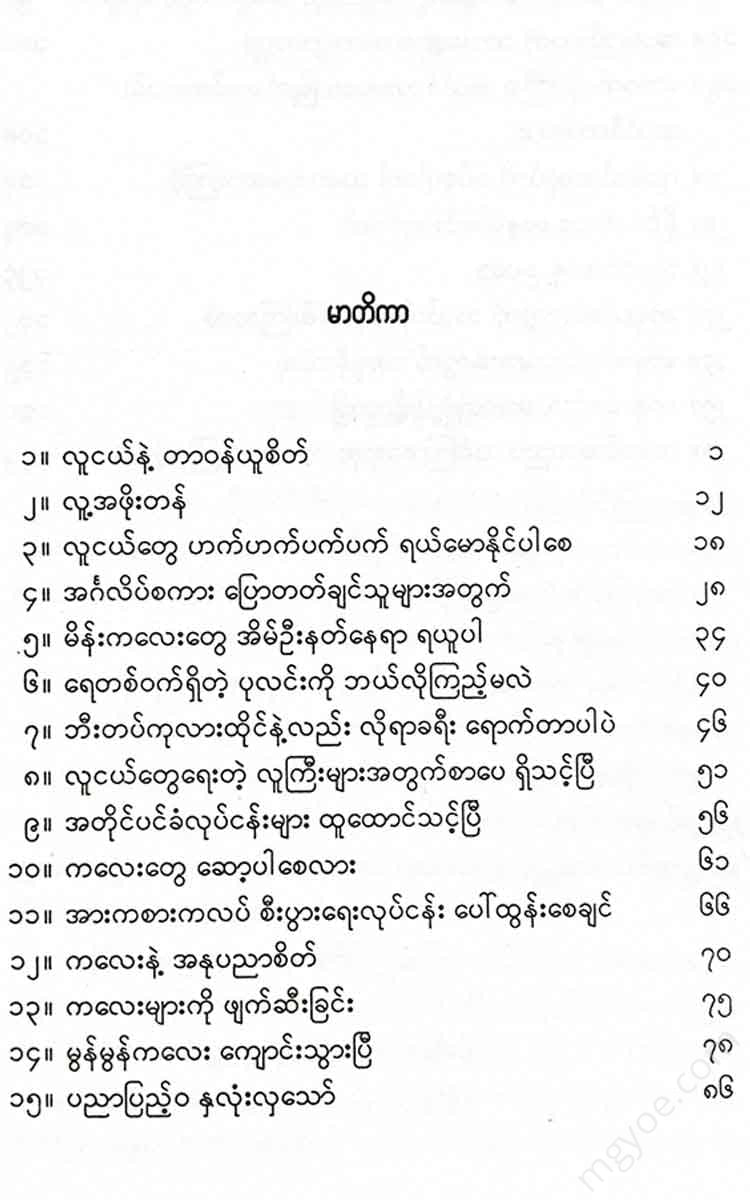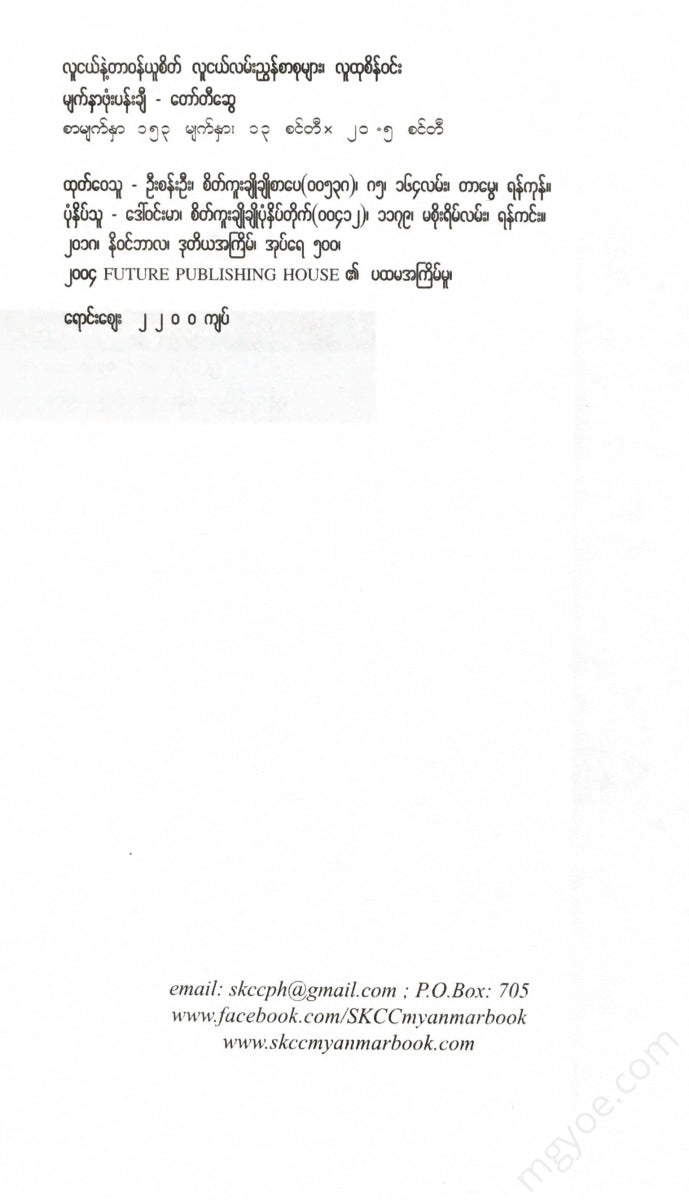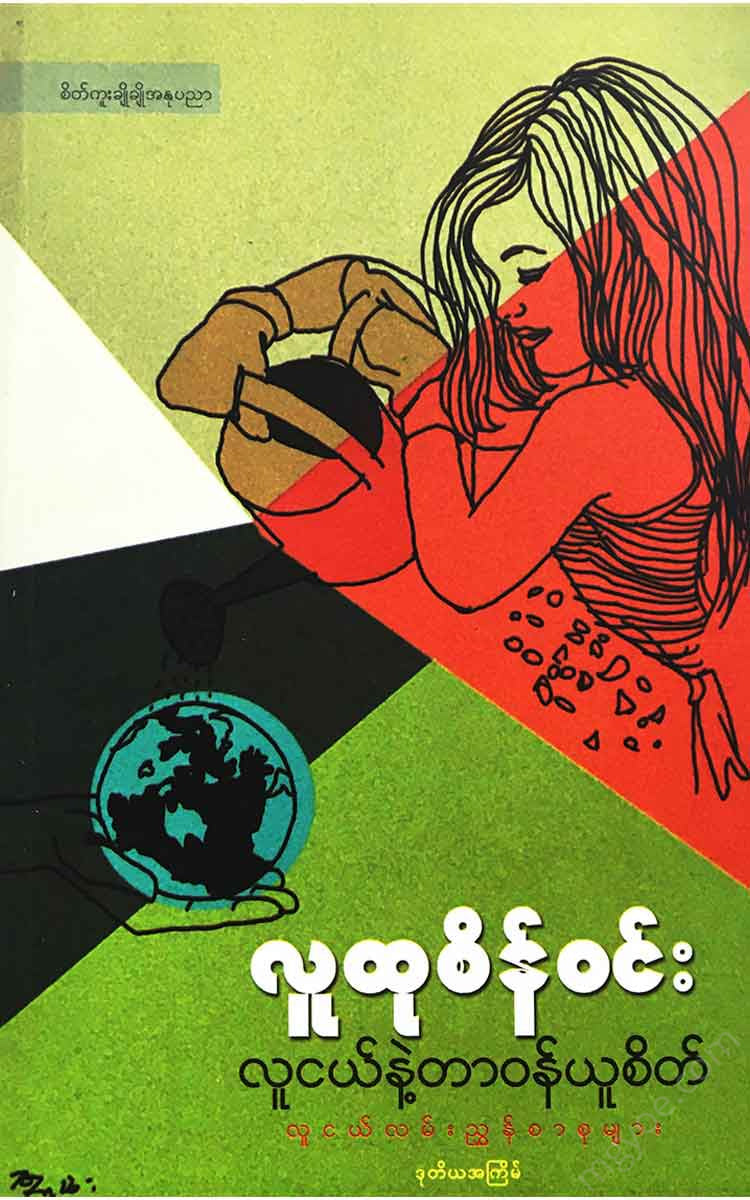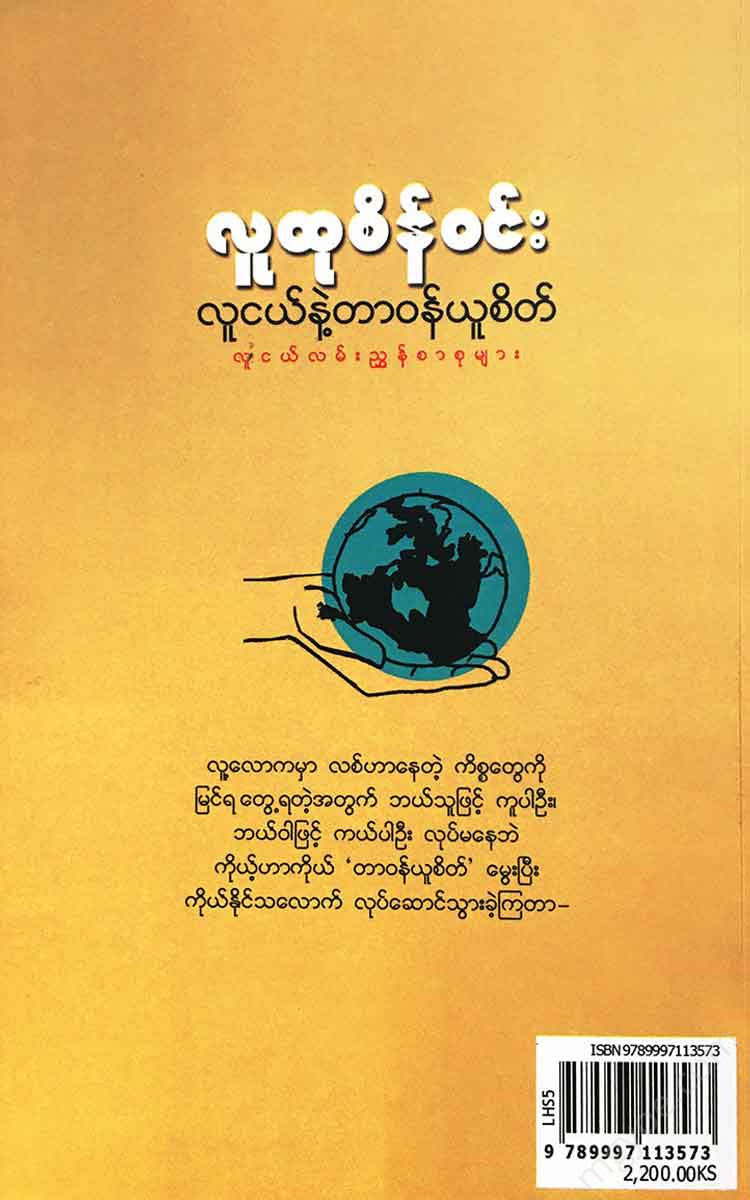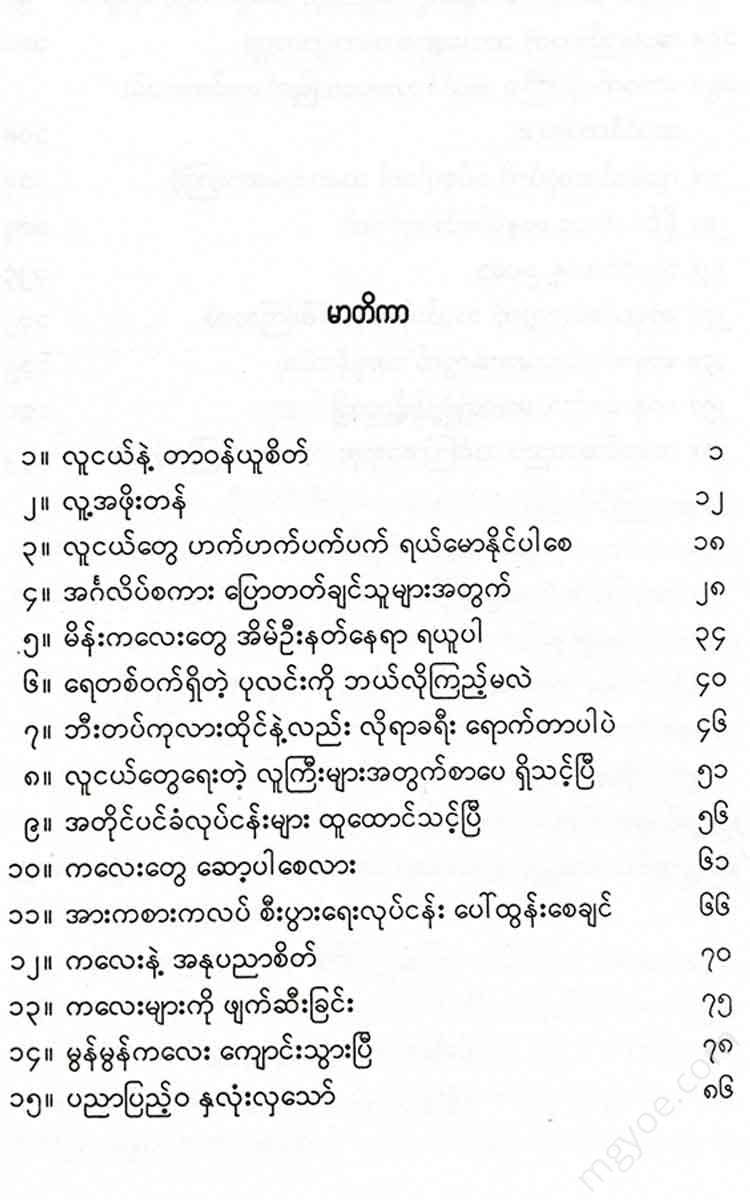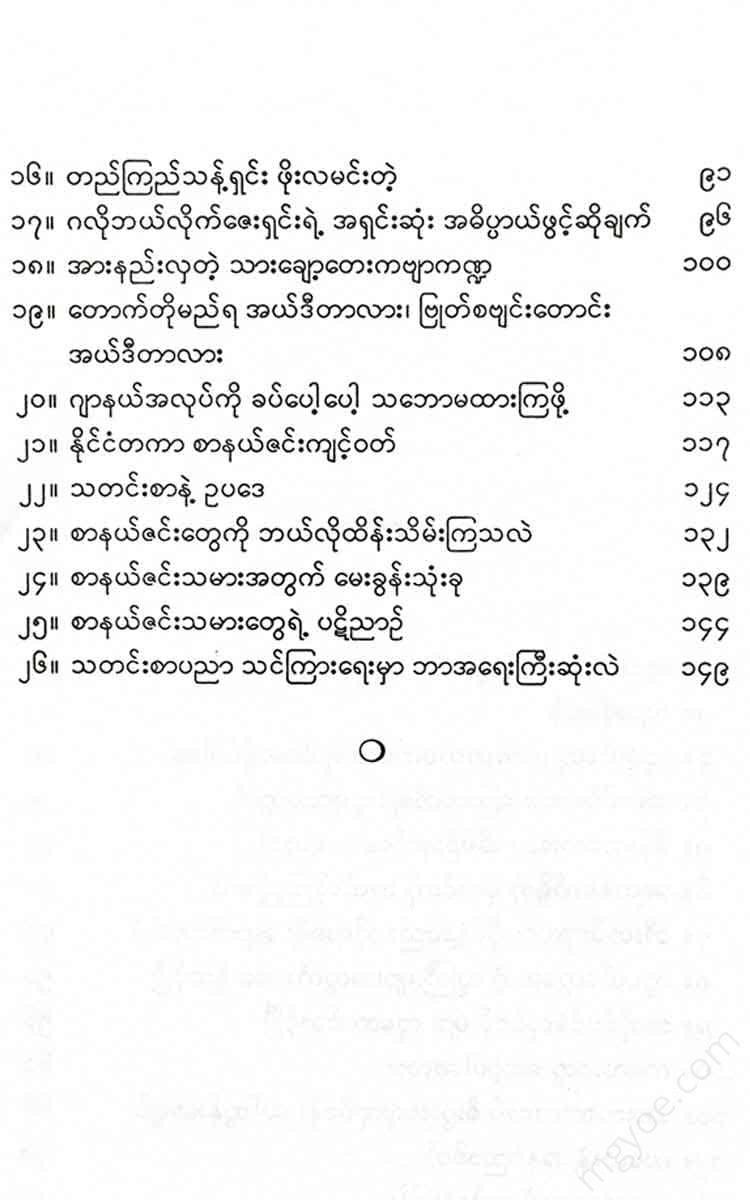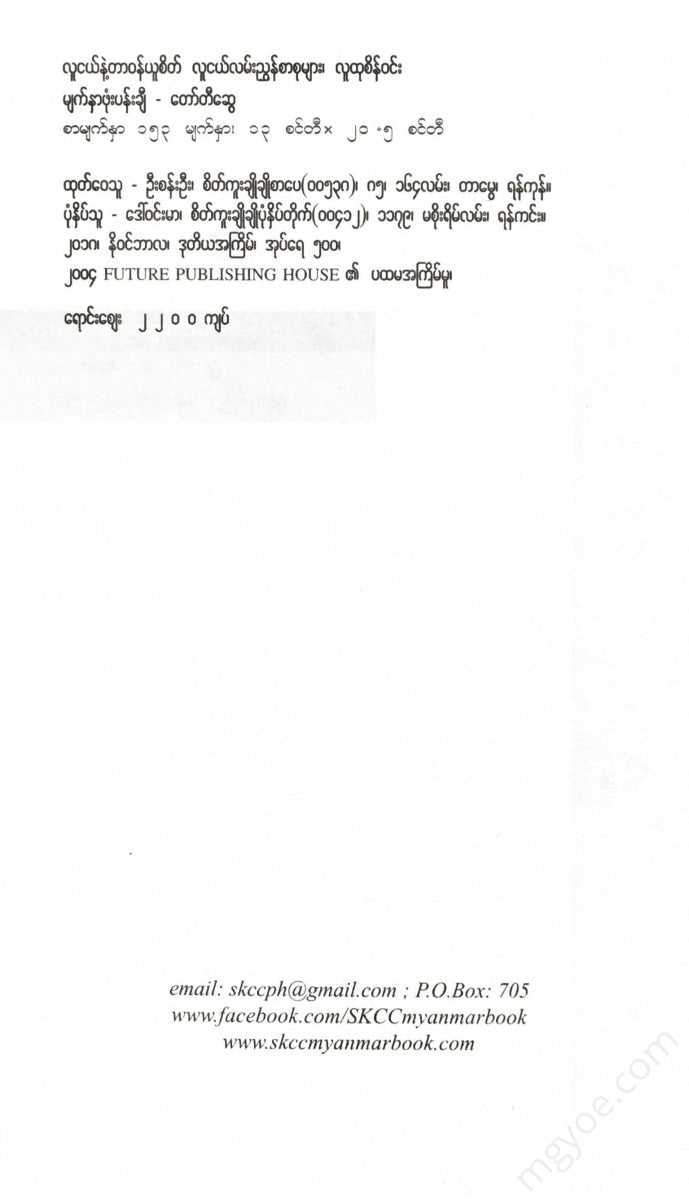စိတ်ကူးချိုချိုစာပေ
Lut Sein Win - Youth and Responsibility
Lut Sein Win - Youth and Responsibility
Couldn't load pickup availability
Youth and responsibility
One night, as I was watching an Italian Serie A football match, I noticed an interesting scene along the line of the goalposts as the first half ended, and I stared at it.
The scene shows a woman furiously hitting a child inside a car. Not just one or two. She is hitting him in many places. She is hitting him with her hand, but also punching him in the head and back. After stopping the beating and getting out, he still can't take it anymore, but he turns back to the car and hits her again.
The whole incident was captured on a television camera from a distance. I didn't even know which country it was on because I caught a glimpse of it. I heard on the news that the woman was being sued by a child abuse prevention organization in the city. I had to watch the football match so I didn't look for the news on other channels. But the scene I caught by chance is still etched in my mind.
Why is the mother beating her child so severely? No matter what the reason is, no matter how much trouble she is going through, she should not beat a three or four year old child like this. It is not acceptable to give the excuse that it is too difficult to say, and to discipline the child for the future. Beating a child is not the same as a weapon. I don't think it is less than forty or fifty points. The way a mother beats her child is not the way a mother would discipline her child. She is beating her child with great passion. Just seeing it makes me sad.
But according to the news, I was relieved to learn that the mother was sued by an organization. I sincerely called the organization three times, saying, "He beat his children, what does it have to do with us?" and that they had fulfilled their duty as human beings within their own society.
Is the rise of "urban society" a factor?
In the old rural society, all people treated each other with humanity. They shared each other's pain and helped each other with their own suffering, even if it was just a "spoonful".
When we enter the urban era and are forced to live in our own rooms on high-rise buildings, we become unaware of ourselves and others. So where is the sense of freedom? We live with our own suffering, and others with their suffering.
The reason for the emergence of urban structures was the transition from an economic and social system of growing food for oneself to a system of growing food for sale. Under this system, large market towns emerged and a class of non-farmers emerged, the marketers.
The nature of the market is to buy goods from producers and sell them in the market. The main goal of the market is to make a profit. Because of the goal of making a profit, the "human spirit" of man has been degraded. From the level of market trading to the level of multinational corporations, the abhidhamma "It doesn't matter whether the cat is white or black, it only matters if the mouse is caught" has developed.
"White cat, black cat" Abhidhamma is the culprit that corrupts the "human mind". When the human mind is corrupted, the "consciousness of responsibility" and the "responsibility" are all destroyed.
This era is called the age of knowledge. In the age of knowledge, people do not live without knowing what their responsibilities are. Almost everyone knows. But just having a "consciousness of responsibility"
It is not enough. You need to have a “sense of responsibility.” In the work you do, in the neighborhood you live in, in your city, in your country, in your country, there are responsibilities that are related to you. There are also responsibilities that are not related to you but that you should take on. Society often considers those who take on such responsibilities and carry them out with their own will as “human beings.”
A responsible person is a "valuable person", while a person without a sense of responsibility is "trash".
“A precious person” refers to someone like Mother Teresa or Sister Daw Oo Zun, who founded the Mingun Home for the Elderly.
Mother Teresa was a European. When she came to India as a nun, she saw the poor, the hungry, the outcasts of humanity. Some were dying of various diseases and were lying on the side of the road. For the people of India, these scenes were so familiar that they were commonplace.
Hunger, poverty, and disease are rampant, and it is not uncommon for people to fall to their deaths on the side of the road. In the coldest winters, before dawn, the municipal authorities often find bodies lying on roadside platforms.
There are more than a hundred of them in Kolkata alone.
Are they saying, "The King of the South cannot save the King of the North" because of their own suffering?
Is it possible that humans are losing their "humanity" due to the age of the "whoever dies, gets sick" system?
For whatever reason, it is true that people have become less "responsible". Seeing the pitiful and marginalized in this situation touched the tender heart of the young nun Sister Teresa. The young nun asked the superiors of the convent where she was assigned to take leave of her.
He resigned from his school duties. He set up his own little shelter, where he took in and cared for those who were dying on the side of the road.
It is true that he is dying and there is nothing he can do. But before he dies, he takes care of his child so that he can live as comfortably as possible. Giving people who have lived their entire lives as outcasts of humanity the kind of kindness they have never received would not seem like a great act of kindness to most people.
But for the outcast and abandoned human beings who have never felt love or compassion even as children, and who yearn for something even if they were just a dog in a rich man's house, the care of a nun is an experience they never dared to dream of.
When Sister Teresa became Mother Teresa, the head of all the religious orders, the Pope, visited India. The Pope came in his own private plane. He also brought a specially ordered "bulletproof" Cadillac. When he arrived in India and saw the work of his subordinate nun, he gave her the Cadillac as a gift.
The compassionate nun did not ride the big khadi wagon. She immediately sold it and built a hospital. When she died, India, a Hindu majority country, held a state funeral, attended by the president and his entire government. Hindus, Muslims, and Buddhists, all worshiped according to their own beliefs.
The world is responsible for those who fulfill their duties to humanity. The one who carries the benefits of humanity has no religious or ideological differences. He has transcended the boundaries of race and religion. What is in his mind is "humanity".
He will only care for those who are suffering. Such a person has transcended the limitations and limitations of a human being. They are no longer ordinary people. They have become "great human beings."
There were people like Mother Teresa around us. I read in the book “Mandalay Thu Mandalay Than” written by Aunt Luthu Daw Amar that even three great people were mentioned. Daw U Zun, the headmistress who founded the Mingun Old People’s Home, the one who started the campaign to build a crematorium in Mandalay and who personally funded it, U Kyaw Hla, the chairman of the Meat Avoidance Group, and U Ngwe, the rickshaw driver who planted trees all over Mandalay.
Daw U Zun was the only daughter of silk merchant parents. After her parents died, she became a silk merchant herself and lived a prosperous life. She started the Mingun Nursing Home with her own money and went to take care of the elderly and the elderly. Later, she sold all her wealth and built nursing homes in big cities such as Mandalay, Yangon, Thaton, and Paungthi. She herself became a nun and took care of the elderly until the end of her life.
U Kyaw Hla was the first to initiate the construction of a crematorium in Mandalay like Yangon. He sold everything he had collected through his hard work and dedication to the city and the people and donated to them. What is remarkable about U Kyaw Hla is that all his donations were made in secret. Another one is U Ngwe, a tree grower. He was not a rich man like the school elder Daw U Zun or the saint U Kyaw Hla. He was not a rickshaw puller. When he had no money, he donated with what he had. What he had was “kindness”.
Let me summarize what Daw Daw Luth Daw Amar wrote about this great and generous rickshaw driver. As much as U Ngwe was generous, Daw Daw's kindness was also very good.
Since Mandalay has been on fire and there are no big trees, temperatures can reach 110 or 111 degrees Celsius every three years, making it extremely hot. It is common for elderly people and young children who cannot tolerate the heat to die prematurely from heatstroke.
So, a kind-hearted man named U Ngwe started planting trees in Mandalay.
The one who donated 26 large houses in Mandalay for people to stay was the big lady of the house, Daw Nyaung. The one who donated many wells in Mandalay was the big well digger, U Soe Kalay. The one who planted more than 500 trees was the rickshaw driver U Ngwe. U Ngwe was a poor man in the Taunggyeokkhat area who made a living with his 7 daughters. But he planted trees, dug the ground in the place he liked, planted the trees, and watered them every day until they grew. There are more than 500 trees of Nyaung pine, Kukko pine, and Seinpan pine in total. His big trees can be seen along the A-lane, in front of Shwe Kyi Myint Pagoda, by the moat, and by the Shwe Tat Chaung in many places.
No one is forcing him. He does it on his own.
